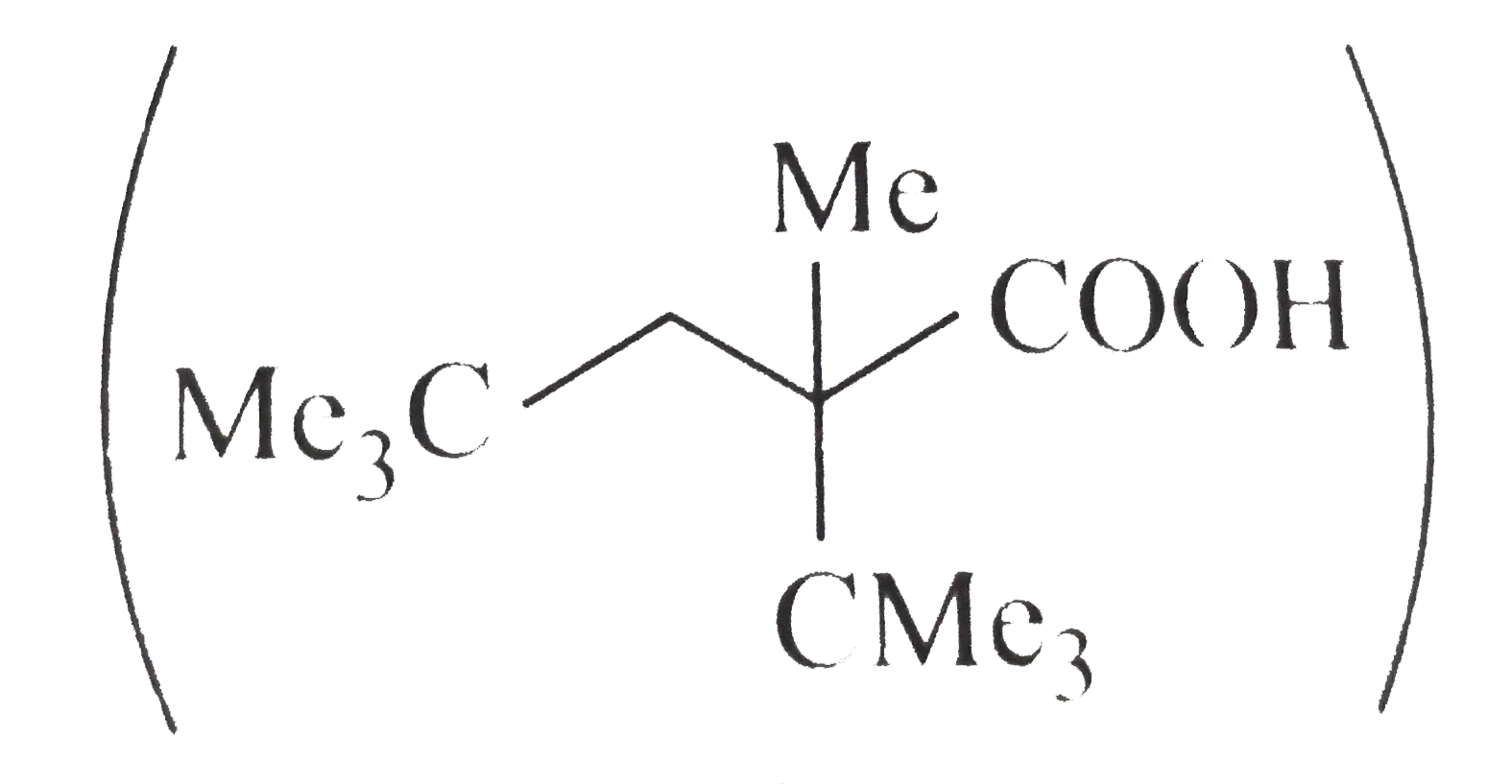Account for the following:
(a) Carboxylic acids with five or fewer carbon atoms are water soluble but, higher ones are insoluble.
(b) Highly branched carboxylic acids are less acidic than unbranched acids.
(c) Acetic acid can be halogenated in prescnce of phos-phorus and chlorine but formic acid cannot be halogenated in the same way.
(d) carbon-oxygen bonds length in formic acid are 1.23 Å and 1.36 Å but in sodium formate both carbon oxygen bonds have same value, i.e., 1.27 Å.
Formic acid is stronger than acetic acid.
(f) Fluoroacetic acid is stronger than chloroacetic acid
(g) Formic acid shows reducing properties.
(h) β-Keto acids undergo decarboxylation easily.
(i) o-Hydroxybenzoic acid is stronger than p-hydroxy benzoic acid.
(ii) Oxidation of toluene by acidic KMnO4 gives poor yield of benzoic acid while oxidation of p-nitro toluene gives good yield of p-nitrobenzoic acid.
(a) The solubility of RCOOH in water is due to hydrogen bonding of-COOH group and water. R-portion being lyophobic resists solubility. As R gets large, this factor prevails over the first factor and thus, higher acids become insoluble.
(b) The-COOH group of the branched acid is shielded from solvent molecules and cannot be stabilized by solvation as effectively as unbranched acid like the acetate anion.
(c ) This is HVZ reaction. It occurs only in those carboxylicacids which have α-hydrogen atoms. Acetic acid possesses three α-hydrogen atoms but formic acid does not have even a single α- hydrogen atom. Thus, formic acis does not undergo this reaction]
The formate ion present in sodium formate is a resonance hybrid of the following two structures :
(d) H−C∣∣O=O−↔H−C∣O−=O
Thus, in resonance hybrid the bond length of C-O are identical. In formic acid, no such resonance exists and thus, the bond lengths are different.
(E ) n acetic acid, methyl group is present which exerts +I negative charge on the carboxylate ion and destabilise it. The loss of proton becomes comparatively difficult in comparison to formic acid. Hence, acetic acid is a weaker acid than formic acid.
(f) Both fluorine and chlorine are electron withdrawing substituents. However, the capacity of fluorine is more than chlorine as it is more electronegative than chlorine. The fluoroacetate ion is more stabilised and thus, fluoroacetic acid has higher tendency to lose its proton. Hence, it is a stronger acid than chloroacetic acid.
(g) Formic acid is easily oxidised to carbon dioxide and water and thus acts as a reducing agent.
HCOOH+[O]→H2O+CO2
(h) β-Keto acids are unstable acids. These readily undergo decarboxylation through a cyclic transition state.

The anion from salicylic acid in o-isomer is stabilized by intramolecular hydrogen bonding which does not exist in p-hydroxybenzoic acid.

(ii) Oxidation is an electrophile, it can destroy the ring in case of toluene. But in p-nitrotoluene, the −NO2 group deactivates the benzene ring and thus increases the yield of p-nitrobenzoic acid
Topper's Solved these Questions
- CARBOXYLIC ACIDS AND THEIR DERIVATIVESBOOK - OP TANDONCHAPTER - CARBOXYLIC ACIDS AND THEIR DERIVATIVESEXERCISE - Problem based on structure and properties
26 Videos
- CARBOXYLIC ACIDS AND THEIR DERIVATIVESBOOK - OP TANDONCHAPTER - CARBOXYLIC ACIDS AND THEIR DERIVATIVESEXERCISE - Brain storming problems
30 Videos
- CARBOXYLIC ACIDS AND THEIR DERIVATIVESBOOK - OP TANDONCHAPTER - CARBOXYLIC ACIDS AND THEIR DERIVATIVESEXERCISE - Illustration
18 Videos
- BASIC PRINCIPLES OF ORGANIC COMPOUNDS (MECHANISM OF ORGANIC REACTIONS)BOOK - OP TANDONCHAPTER - BASIC PRINCIPLES OF ORGANIC COMPOUNDS (MECHANISM OF ORGANIC REACTIONS)EXERCISE - SINGLE INTEGER ANSWER TYPE QUESTIONS
4 Videos
- CHEMICAL KINETICSBOOK - OP TANDONCHAPTER - CHEMICAL KINETICSEXERCISE - LINKED COMPRESHENSION TYPE QUESTIONS ( SECTION-VI)
4 Videos
Similar Questions
Knowledge Check
Acetic acid can be halogenated in presence of phosphorus and chlorine. Formic acid cannot be halogenated with same way because of
Apresence of α- H atom in formic acidBpresence of α- H atom in acetic acidCabsence of α - H atom in CH3COOHDhigher acidic strength of acetic acid than formic acid.Acetic acid can be halogenated in presence of phosphorus and chlorine. Formic acid cannot be halogenated with same way because of
Apresence of α- H atom in formic acidBpresence of α- H atom in acetic acidCabsence of α - H atom in CH3COOHDhigher acidic strength of acetic acid than formic acid.Acetic acid can be halogenated in presence of phosphorus and chloride . Formic acid cannot be halogenated with same way because of
Apresence of α - H - atom in formic acidBabsence of α - H - atom in formic acidCabsence of α - H - atom in CH3COOHDhigher acidic strength of acetic acid than formic acid
Formic acid is stronger acid than acetic acid. Explain.
View SolutionCarboxylic acids with five or less carbon atoms are water soluble while the higher acids are insoluble in water. Explain.
View SolutionExplain the following .
(i) Carbon - oxygen bond length in formic acid are 1.24Å and 1.36Å but in sodium formate both the carbon - oxygen bonds have same value i.e., 1.27Å
(ii) In vapour state , acetic acid shows a relative molecular weight of 120.
View SolutionExplain the following :
Highly branched acids such as are less acidic than unbranched acids.
are less acidic than unbranched acids.
View SolutionGive reasons for the following in one or two sentences.
'Acetic acid can be halogenated in the presence of P and Cl2, but formic acid cannot be halogenated in the same way'.
View Solution
